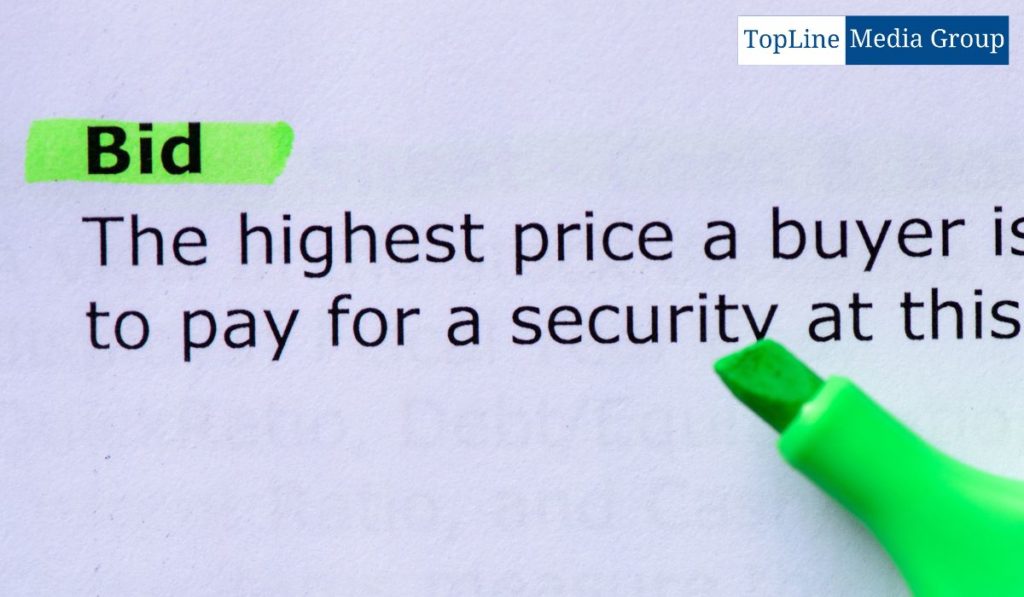Bid strategies are crucial in optimizing the performance and success of paid search campaigns.
With the evolution of digital advertising platforms, such as Google Ads and Facebook Ads, bid strategies have become more sophisticated and automated.
In this article, we will explore various bid strategies, from manual to automatic, and delve into advanced bid optimization techniques to help you take your paid search campaigns to the next level.
Understanding Bid Strategies
Bid strategies refer to the methodologies and approaches used to determine the maximum amount an advertiser is willing to pay for a click or conversion in an auction-based advertising system.
Effective bid strategies aim to maximize the return on investment (ROI) by achieving the desired campaign goals, such as maximizing conversions, increasing conversion value, or maintaining a specific average position.
Manual Bidding Strategies
Manual bidding allows advertisers to control their bids, individually setting the bid amounts for each keyword or ad group.
This strategy requires continuous monitoring and adjustment based on performance data.
Manual bidding provides flexibility and enables advertisers to implement their bidding strategies based on their campaign objectives and insights gained from data analysis.
Automated Bidding Strategies
Automated bidding strategies leverage machine learning algorithms to optimize bids automatically based on predefined goals and constraints.
Platforms like Google Ads offer various automated bidding strategies, such as Target CPA (Cost-Per-Acquisition), Target ROAS (Return on Ad Spend), Maximize Conversions, and Enhanced Cost-Per-Click (ECPC).
These strategies use historical data, user behavior signals, and real-time auction data to adjust bids to achieve the desired outcome.
 Advanced Bid Optimization Techniques
Advanced Bid Optimization Techniques
Smart Bidding: Smart Bidding is an advanced form of automated bidding that uses machine learning algorithms to optimize bids based on a wide range of contextual signals.
It considers the device, location, time of day, and user intent to make real-time bidding decisions. Intelligent Bidding strategies include Target CPA, Target ROAS, and Maximize Conversions.
These strategies are designed to improve campaign performance by automatically adjusting bids to maximize the chances of achieving the desired goal.
Conversion Value-based Bidding: Conversion value-based bidding strategies, such as Target ROAS, focus on maximizing the value generated from conversions rather than just the number of conversions.
By assigning different values to different types of mutations or customer actions, advertisers can optimize bids to prioritize higher-value modifications, ultimately driving increased revenue or profitability.
Bid Modifiers: Bid modifiers allow advertisers to adjust bids based on specific criteria, such as device type, location, or demographics.
By analyzing performance data and identifying patterns, bid modifiers can be applied to target audiences with higher conversion rates or higher average order values, helping optimize bids and allocate budget more efficiently.
FAQs
How do CTA funnels contribute to higher conversions?
CTA funnels guide users through well-designed and strategically placed CTAs, leading them from initial engagement to the final conversion. Businesses can effectively nurture and convert leads by optimizing each step of the funnel and providing relevant and persuasive CTAs at each stage, resulting in higher conversion rates.
How can I create a compelling call-to-action copy?
To create compelling call-to-action copy:
- Focus on being clear, concise, and action-oriented.
- Use strong verbs and personalized language that resonates with your target audience.
- Highlight specific benefits or incentives to encourage users to take action.
A/B testing different variations can help identify the most impactful copy for your particular audience.
What are some practical design tips for CTAs?
- Use contrasting colors and distinct visual elements to make the CTA stand out.
- Incorporate visual cues like arrows or icons to guide users’ attention.
- Ensure the CTA is visually consistent with the overall design of your website.
- Make the CTA large enough to be easily clickable and touch-friendly for mobile devices.
- Utilize white space effectively to enhance the visibility and focus on the CTA.
Where should I place CTAs on my website?
Strategic placement of CTAs is crucial for maximum impact. Consider placing CTAs above the fold, at the end of blog posts, or alongside product descriptions. Analyze user behavior and test different placements to identify the most influential positions for your website and audience.
 How can I A/B test my CTAs for better performance?
How can I A/B test my CTAs for better performance?
A/B testing involves creating multiple variations of your CTAs and testing them against each other to determine which version performs better. Test different elements such as copy, color, size, and placement. Use analytics to measure and compare the performance of each variation and make data-driven decisions to optimize your CTAs for better results.
What are some best practices for CTAs in different marketing channels?
- Tailor your CTAs to match each marketing channel’s specific context and goals.
- Consider each channel’s user mindset and expectations to create more relevant and persuasive CTAs.
- Optimize CTAs for mobile devices, as mobile browsing is prevalent across all marketing channels.
- Continually monitor and analyze the performance of your CTAs in different media, making necessary adjustments based on user behavior and feedback.
Conclusion
Bid strategies form the foundation of successful paid search campaigns, allowing advertisers to optimize their bids and achieve their desired goals. From manual bidding strategies that offer control and flexibility to advanced automated bidding strategies driven by machine learning, advertisers have various options. Advertisers can further enhance campaign performance and drive better results by leveraging advanced bid optimization techniques, such as intelligent and conversion value-based bidding. Continual testing, analysis, and optimization are crucial to finding the most effective bid strategy for your business objectives and audience. Stay ahead of the competition by embracing advanced bid strategies and maximizing the potential of your paid search campaigns.

